Table Of Contents
- The Concept Of Omnichannel Marketing
- Increased Customer Loyalty And Retention
- Improved Sales And Revenue
- Better Data Insights
- What Are Omnichannel Marketing Tools?
- What Are The Top 10 Omnichannel Marketing Tools In 2025?
- 1. HubSpot Marketing Hub Tool
- 2. Salesforce Marketing Cloud Tool
- 3. Klaviyo Tool
- 4. ActiveCampaign Tool
- 5. Omnisend Tool
- 6. Braze Tool
- 7. Zendesk Tool
- 8. MoEngage Tool
- 9. Iterable Tool
- 10. Mailchimp Tool
- How To Choose The Right Omnichannel Marketing Tool For Your Business?
- What Are The Benefits Of Using Omnichannel Marketing Tools?
- Enhanced Customer Experience & Loyalty
- Higher Sales & Superior ROI
- Effective Integration
- Increased Data And Insights
- Brand Consistency Is Increased
- Operational Efficiency
- How Omnichannel Marketing Tools Drive Customer Engagement?
- What Are The Challenges With Omnichannel Marketing & Tools?
- Common Challenges
- Solutions And Tips
- Integrating Omnichannel Marketing Tools With Your Existing Marketing Stack
- Smooth Adoption Requirements
- Future Trends In Omnichannel Marketing Tools
- Ai And Machine Learning (Ml)
- Hyper-Automation
- The Growth Of Conversational Commerce & Virtual Reality (VR)
- Privacy-First Personalization
The Impact Of Omnichannel Marketing Tools On Customer Experience
The development of a successful omnichannel marketing strategy has been the most engaging brand experience of today’s world.
The modern-day customer expects nothing less than a seamless journey, whether offline, online, or in-between.
The various sections of a business, such as e-commerce, in-store engagement, and social media can no longer operate in isolation.
On the contrary, the top brands are integrating all touchpoints through technology, unified communication, and rich customer data while nurturing trust and loyalty with customers at every step.
Through an examination of customer journeys, the author unfolds the role of omnichannel marketing tools in transforming customer experiences, powering long-term connections, and driving business growth in the current competitive market.
The Concept Of Omnichannel Marketing
Omnichannel marketing is more like a unified approach to the customer experience that seamlessly integrates all available channels. It can be done through the physical stores, e-commerce, mobile applications, social media, or more, into a single cohesive journey.
Unlike multichannel marketing, the omnichannel marketing strategy ensures a consistent brand message and a frictionless customer experience!
Whether it is about browsing online, asking any sort of question on social media, or making an in-store purchase.
In today’s digital landscape, why does this omnichannel marketing matter? The modern consumer no longer interacts with a brand or via a single pathway!
They further expect to engage on their preferred platform at a given moment. If you are running a business, it is crucial to implement omnichannel strategies.
Increased Customer Loyalty And Retention
Through a personalised and continuous experience, the brands can easily foster a deeper relationship and higher customer lifetime value.
Improved Sales And Revenue
A cohesive experience across all the touchpoints always makes it easier for you to purchase. This can lead to very high conversion rates and larger average order values.
Better Data Insights
The integration of data from all channels provides a very comprehensive view of customer behaviour. This enables more effective personalisation and targeted marketing efforts.
What Are Omnichannel Marketing Tools?
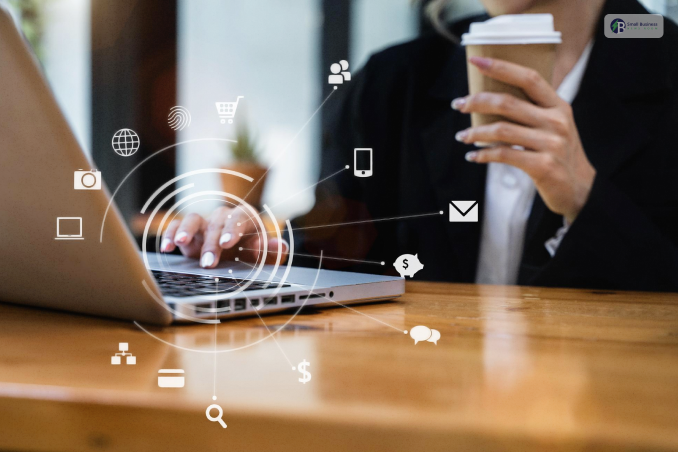
Omnichannel marketing tools are more like software solutions that are designed to create a unified and seamless customer experience. This can be seen across the communication channels and touchpoints, in both online and offline modes.
These platforms can centralise the customer data and further ensure every engagement is informed by prior history.
The omnichannel marketing helps businesses by:
- Creating a unified customer view: Consolidating all types of data for personalized interactions.
- Ensuring consistent experience: Maintaining brand voice and service quality across all platforms.
- Improving personalization: Marketers can use comprehensive data to run highly targeted marketing campaigns.
Key types of tools mainly include:
- Customer relationship management systems or CRMS: The core database, which will contain all the basic information.
- Analytics platform: You can use these tools to measure overall performance across various touchpoints and optimize strategies.
- Integrated communication platforms: These tools let you manage your interactions across email, social media, live chat, and SMS through a single interface.
- Customer data platforms (CDPs): This is about unifying disparate data sources into a single customer profile.
Once these tools are properly integrated, businesses can easily break down data silos, enabling a cohesive, efficient customer journey from awareness to loyalty.
What Are The Top 10 Omnichannel Marketing Tools In 2025?
1. HubSpot Marketing Hub Tool
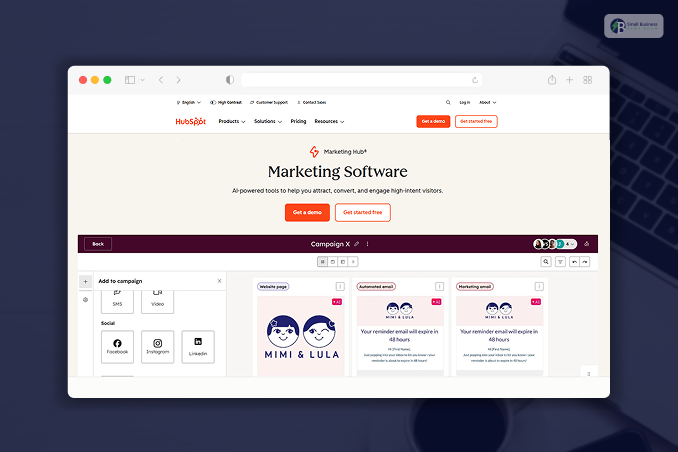
Overview: HubSpot Marketing Hub is a robust, all-in-one inbound marketing platform. It helps integrate various sectors, such as marketing, sales, and customer support.
The tool is immensely helpful for organizations to achieve a unified customer view throughout the entire customer journey! From the very beginning till the very end!
Features:
- Email marketing,
- Landing page building,
- Social media posting, SEO,
- Blog writing,
- Lead scoring,
- Advanced graphical campaign automation
Usage: The HubSpot marketing tool is a perfect fit for any medium-sized company or growing business. It is especially suitable for those who require one simple platform for the entire lead-to-sale process.
Thanks to advanced features, marketers no longer have to deal with complex, scattered systems.
The marketers are using these tools to design and further implement campaigns based on the user behaviour that can automatically trigger actions across different channels.
2. Salesforce Marketing Cloud Tool
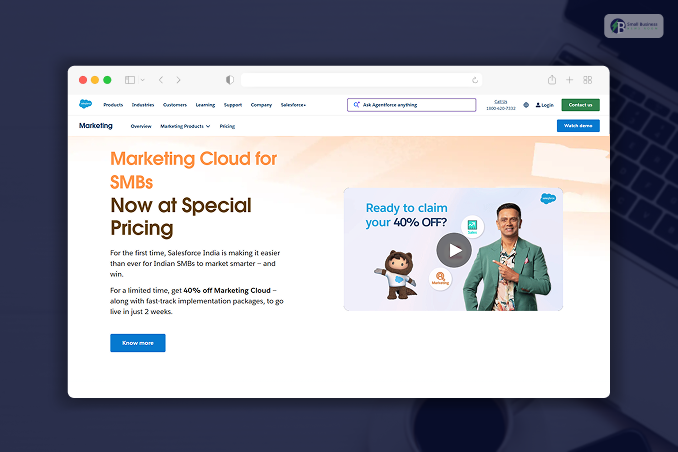
Overview: Salesforce Marketing Cloud is a top-tier, highly flexible platform designed for the largest companies.
It provides the best solution for managing difficult, personalized customer communication across the digital landscape, leveraging artificial intelligence (Einstein AI) for predictive analytics and audience insights.
Features:
- Journey Builder for cross-channel orchestration,
- Email studio,
- Mobile studio (SMS, push),
- Advertising studio,
- Social studio,
- AI-powered predictive journeys,
- Deep integration with the broader Salesforce ecosystem.
Usage: Best suited for large enterprises that require robust customization, massive scalability, and the ability to integrate marketing efforts deeply with sales and service operations.
It is used to orchestrate highly personalized, data-rich campaigns across millions of customers. Reducing error points in a derived system.
3. Klaviyo Tool
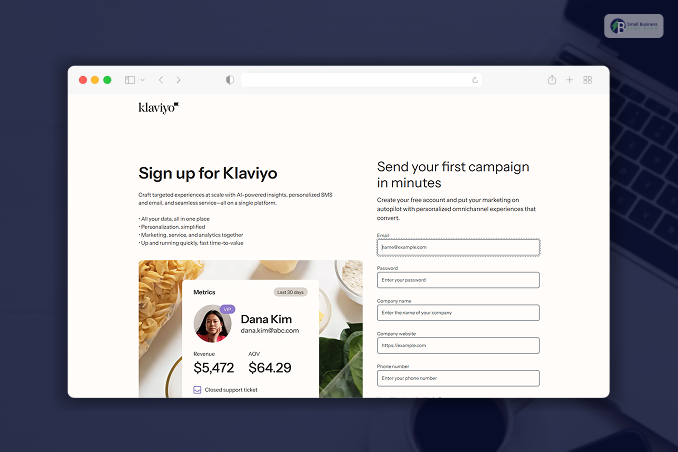
Overview: Klaviyo is an omnichannel platform primarily targeted at e-commerce retailers and is known for its strong, native integrations with Shopify and BigCommerce.
It uses data analytics to segment the audience and deliver personalized email and SMS communications that drive sales and customer retention.
Features:
- Email and SMS automation,
- E-commerce flows (abandoned cart, welcome series, etc.) are prebuilt,
- Advanced segmentation,
- Product recommendations based on individual preferences,
- Tracking of web activities in real-time
- AI-based predictive analytics.
Usage: The tool of choice for e-commerce companies that want to get the most out of their customers over a lifetime.
It is a marketing tool that helps users quickly set up automations based on data and send messages and offers that keep customers from leaving. This, too, further helps to grow the company through predictive insights.
4. ActiveCampaign Tool

Overview: ActiveCampaign is a cost-effective, versatile solution that combines a powerful email marketing system, a comprehensive CRM, and robust marketing automation into a single, easy-to-use platform.
It has developed a very good customer journey map that understands customer behavior, thereby eliminating the drawbacks of automation.
Features:
- Automation builder with visual representation,
- Email marketing, integrated CRM,
- SMS marketing,
- Site messaging,
- Segmentation at an advanced level,
- Machine learning-powered predictive content, over 900 integrations.
Usage: It is a recommended solution for small to medium-sized businesses that can engage customers efficiently.
It helps users develop personalized, automated customer experiences across multiple communication channels based on their actions and interests.
5. Omnisend Tool

Overview: Omnisend is a marketing automation platform tailored for the e-commerce channel and an omnichannel solution for online retailers to communicate in one way or another.
It lets users handle email, SMS, and push notifications together in a coherent, easy-to-understand automation flow, creating a seamless customer experience effortlessly.
Features:
- Pre-built e-commerce automation templates,
- A “Product Picker” for easy campaign building,
- Email and SMS capabilities,
- Push notifications,
- Robust segmentation,
- Detailed sales reporting.
Usage: Perfect for rising e-commerce brands seeking affordable solutions with powerful features and great support.
It automates welcome sequences, cart abandonment campaigns, and post-purchase follow-ups across multiple channels simultaneously.
6. Braze Tool
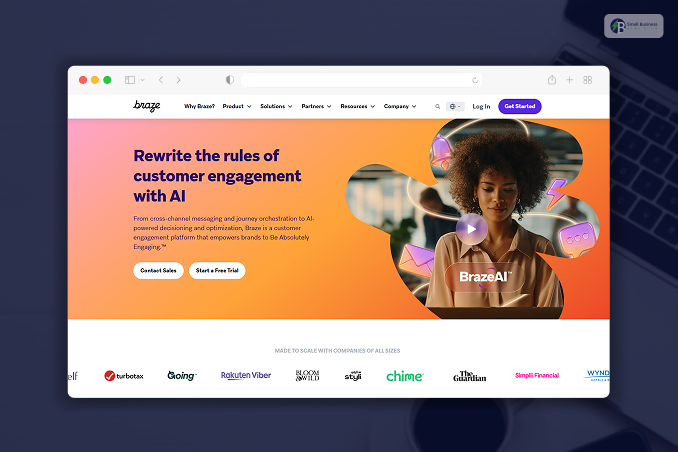
Overview: Braze is a customer engagement tool that is optimized for mobile-first companies and their need to deliver real-time, individualized experiences.
It is good at coordinating messaging across different channels based on real-time customer activity in the application and on the web.
Features:
- Cross-channel messaging (push, in-app, email, SMS, web),
- Real-time data streaming,
- Sophisticated segmentation,
- A/B and multivariate testing,
- Flexible API for custom integrations,
- Powerful analytics.
Usage: This platform is mainly designed for mobile apps and large tech companies focused on growth.
The developers and marketers are the ones who benefit the most from this tool. They can deliver highly contextual, timely messages that drive better user retention, engagement, and conversion rates.
7. Zendesk Tool
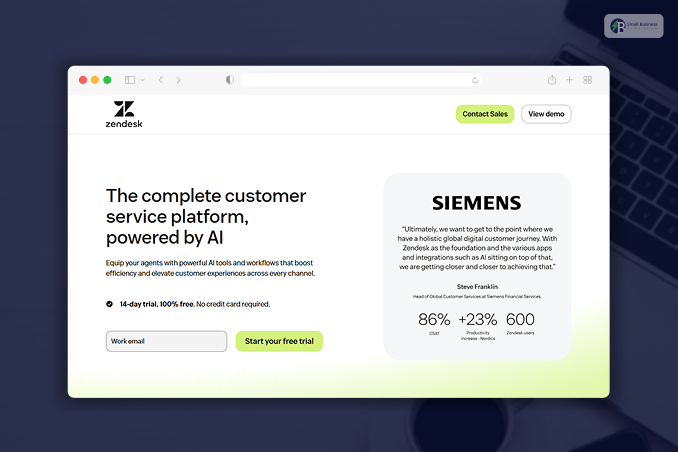
Overview: Despite its initial reputation as a customer service software, Zendesk is an omnichannel marketing tool by default.
It merges every user support conversation across different channels into a single agent dashboard. This way, it keeps the brand’s voice and manages complaints quickly wherever customers are.
Features:
- Unified agent workspace,
- Advanced ticketing system,
- AI chatbots, email/chat/voice/social media integrations,
- Self-service help centers,
- Detailed reporting.
Usage: Best applicable for companies where customer support is an important part of the omnichannel strategy.
That is why it is very effective at consistently delivering high-quality service and ensuring that customer support interactions positively enhance the overall brand experience.
8. MoEngage Tool

Overview: MoEngage is an experiential customer engagement platform driven by insights. These insights further leverage artificial intelligence and machine learning to help brands understand customer behavior.
Moreover, it helps in offering hyper-personalized experiences across channels. It is mobile app companies that want to retain users who are best supported.
Features:
- AI-assisted personalization,
- Visual journey creator (Flows),
- Up-to-date slicing and dicing,
- Email,
- Push notifications,
- In-app messaging,
- On-site messaging,
- Insights into churn reduction through predictive analytics.
Usage: Attracts product-led growth and mobile-first companies that want to deeply understand user interactions.
It is used to plan and execute highly targeted campaigns that attract and retain users within the application ecosystem.
9. Iterable Tool

Overview: Iterable is a flexible growth marketing platform that enables a seamless customer experience orchestrated across multiple channels.
Its emphasis on experimentation and data-rich insights has made it very popular, allowing teams to easily and efficiently perform customer journey optimizations.
Features:
- A/B testing platform for experimentation,
- A workflow builder,
- email,
- SMS,
- Push notifications,
- Web push and catalog management,
- A powerful API for technical teams.
Usage: This tool is ideal for marketing teams that are technical or engineering-centric and value customization and rigorous testing.
It is used to run advanced experiments and create highly personalized workflows backed by real-time behavioral data.
10. Mailchimp Tool
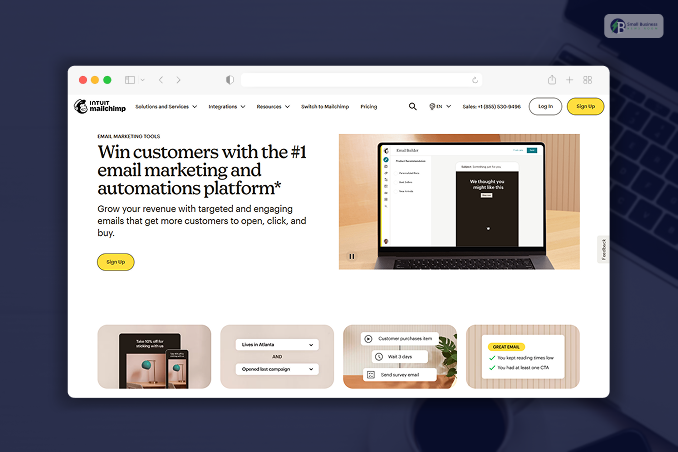
Overview: Starting as an email marketing platform, Mailchimp has evolved into an all-in-one omnichannel platform capable of serving small and medium-sized businesses.
It still delivers the same high-quality service, with an easy-to-use interface, while offering a single point from which all marketing efforts can be managed.
Features:
- Email marketing,
- Social media ad management,
- Landing page builders,
- Postcards,
- Basic automation workflows,
- Robust analytics,
- A user-friendly creative assistant.
Usage: A small business can have an accessible entry point for connecting multiple channels without the complexity or price of enterprise tools.
It is used to build brand presence and to easily and effectively manage initial omnichannel efforts.
How To Choose The Right Omnichannel Marketing Tool For Your Business?
To choose the proper omnichannel marketing tool, one must examine a variety of customer touchpoints to ensure a smooth, consistent customer experience.
- Define Your Needs: To start, assess the company’s goals, identify the target audience, and pinpoint the customer journey segments that are most challenging for the company.
- Consider Integration First: The platform should not only integrate but also be fully in sync with your current CRM, e-commerce, and analytics systems, enabling a single customer data view across all touchpoints.
- Identify Core Features: The core features include the ability to analyze data in real time, segment customers, apply AI-powered personalization at scale, create marketing automation workflows, and use a unified campaign builder across all channels (email, SMS, social, in-store, etc.).
- Assess Usability and Support: Pick a platform that is user-friendly, not overly complicated, and easy for your team to work with. Confirm that the provider provides very good customer support and has ample training materials.
- Scalability and Cost Consideration: Choose a solution that scales with your business and offers a transparent pricing model.
- Assess the potential ROI: This helps ensure the benefits outweigh the total cost of ownership (TCO), including hidden fees.
- Test and Optimize: Use free trials or demos to evaluate how well the platform performs, and track performance metrics to fine-tune your strategy.
What Are The Benefits Of Using Omnichannel Marketing Tools?

The application of omnichannel marketing tools in the mix offers a plethora of advantages that, in turn, help businesses grow. The key advantages are:
Enhanced Customer Experience & Loyalty
Consumers are modern-day seekers, and the brands that provide a hassle-free, consistent experience across all touchpoints (website, app, social media, brick-and-mortar store) are most likely to win their trust and loyalty.
The process takes longer, but it significantly influences customer satisfaction, leading to higher retention and loyalty in the long run.
Higher Sales & Superior ROI
The scenarios mentioned above are among the consequences of implementing Omnichannel. Moreover, customers who shop across multiple channels would spend more and buy more frequently than those who shop through only one channel.
Effective Integration
The integrated approach results in running highly personalized, simultaneous marketing campaigns that target effectively (e.g., abandoned cart reminders), thereby increasing conversion rates and revenues.
Increased Data And Insights
The tools, by joining the data channels, offer a single view of customer behavior and preferences across all the channels.
Data-driven insights lead to better decisions, more effective personalized offers, and optimized marketing budgets that deliver better ROI.
Brand Consistency Is Increased
The identical manner of communication – voice, messaging, and visuals, throughout all online and offline platforms plays a major role in building customer trust and recognition for the brand.
As a result, the brand appears more trustworthy and professional in customers’ perceptions.
Operational Efficiency
Integration simplifies processes across marketing, sales, and inventory management, enabling better resource use and improving operational effectiveness.
How Omnichannel Marketing Tools Drive Customer Engagement?
Customer engagement is a crucial factor for long-term brand success, and omnichannel tools are an instrumental approach to it!
These tools facilitate a very close connection by enabling a smooth, personalized message to get through.
Customers will receive the same message every time, no matter how they interact with the brand, whether through a website, mobile app, or store.
One real-world example of effectiveness is increased retention. The brands are operating with very sophisticated omnichannel strategies.
The company has thus achieved an astounding 91% customer retention rate, which is significantly higher than that of less sophisticated approaches.
What Are The Challenges With Omnichannel Marketing & Tools?
Building an effective omnichannel strategy is not a walk in the park; rather, it involves overcoming several major challenges, such as technical issues, proper data management, and maintaining a consistent customer service vibe.
Common Challenges
1. Integration problems: A lot of companies are using a bunch of old systems (CRM, e-commerce, inventory management, etc.) that are not communicating well.
As a result of this lack of integration, the customer journey is becoming fragmented, and the process is inefficient.
2. Data silo: Commonly, customer data gets stuck in different departments’ systems, which makes it impossible to have one unique customer profile.
The personalization effort will be unsuccessful without a 360-degree view, and the campaign will be less effective as a result.
3. Users have to deal with complex experiences: Establishing content, messaging, and functionality across web, mobile, social, and in-store without a central plan can lead to customers encountering clunky, inconsistent, or repetitive experiences that frustrate them.
4. Team Alignment & Resource Constraints: Different departments (marketing, sales, IT, customer service) may work under a separate set of objectives and metrics, which will limit cross-functional collaboration.
Teams face challenges due to budget limitations, a lack of specialist talent, and other factors.
Solutions And Tips
1. Invest in a Customer Data Platform (CDP): A CDP is a vital tool for merging data from various sources into one single repository that is accessible by all, thus unlocking the customer view and eliminating the silo effect.
2. Adopt an Integrated Tech Stack: The first step is to choose the platforms with excellent integration attributes or to employ integration tools like Zapier.
A unified marketing platform can bring all channel operations into a single place, making them easier to manage.
3. Map the Customer Journey: The design of the experience should be done from the customer’s point of view.
Draw a picture of all possible touchpoints to identify problems and ensure the movement from channel to channel is not interrupted.
For instance, letting customers place online orders and pick them up at the brick-and-mortar store.
4. Establish Strong Governance & Collaboration: Develop a detailed brand style guide to maintain consistent communication.
Involve all departments and practices in aligning the main customer journey with data sharing, and clearly assign ownership for each part.
5. Utilize AI and Automation: Use AI and machine learning to perform personalization and behavior-based customer segmentation.
This will result in the creation of high-quality, personalized content that can be produced effortlessly without stressing out the marketing team.
Integrating Omnichannel Marketing Tools With Your Existing Marketing Stack
One of the most important aspects of omnichannel marketing is the seamless integration of different methods. It provides a synchronized view of consumer information and automatically sets paths that deliver the same customer experience at all touchpoints.
Among the main integration methods are:
API integrations (The Gold Standard): Advanced tools for omnichannel marketing provide sophisticated Application Programming Interfaces (APIs) that serve as a connecting passageway for data transfer between systems.
The APIs let you have customer data flow back and forth in real time between your current CRM (such as Salesforce or HubSpot), email platforms, e-commerce systems, and social media tools.
This helps in ensuring that every system has up-to-date customer information.
Customer Data Platforms (CDPs): A CDP is indeed a heavy-duty machine that can ingest data from various sources, clean it, and ultimately create a permanent, comprehensive customer profile.
The whole process happens in one place, and the data is made available to every marketing tool that is integrated for activation and personalization.
Pre-built connectors and native integrations: Numerous widely used marketing tools have either native integrations or pre-built connectors (like those available in the Segment and Emarsys platforms.
These ease the process of connecting the two systems without requiring significant custom development.
Smooth Adoption Requirements
Define Clear Data Governance: Establish clear regulations on data ownership, formatting, and accessibility to preserve data quality.
Involve IT Early: Collaborate with the IT department to address security, scalability, and technical issues at an early stage through multidisciplinary teamwork.
Test Thoroughly: Comprehensive testing is required to confirm that data is transmitted correctly between systems and that automated triggers function as expected before the full rollout.
Future Trends In Omnichannel Marketing Tools
New technologies will drive hyper-personalization in omnichannel marketing, making customer interactions more intuitive, effective, and predictive.
Ai And Machine Learning (Ml)
Rather than applying AI only to simple tasks, it is now being utilized for predictive analytics. The AI will analyze large amounts of data using machine learning and predict future customer behavior.
This allows marketers to recognize “next best actions” and to offer the relevant products or content before the customer even realizes he/she need them.
Hyper-Automation
The next era of automation will link advanced AI insights directly to execution workflows. Thus, instant campaign orchestration is expected. This activates personalized interactions across all channels in real time, without human intervention, thereby greatly simplifying operations.
The Growth Of Conversational Commerce & Virtual Reality (VR)
The use of chatbots and virtual assistants is improving the customer experience.
In the future, VR and augmented reality (AR) will combine the shopping experiences of online and offline shopping.
Customers could “try on” products digitally or walk through virtual stores. These activities would be recorded by the main omnichannel data platform, thus influencing future marketing strategies.
Privacy-First Personalization
As privacy regulations keep changing (e.g., the discontinuation of third-party cookies), upcoming tools will prioritize “zero-party data” (data customers share voluntarily) and the ethical use of data. Such tools will build trust while still offering relevant and personalized experiences.














